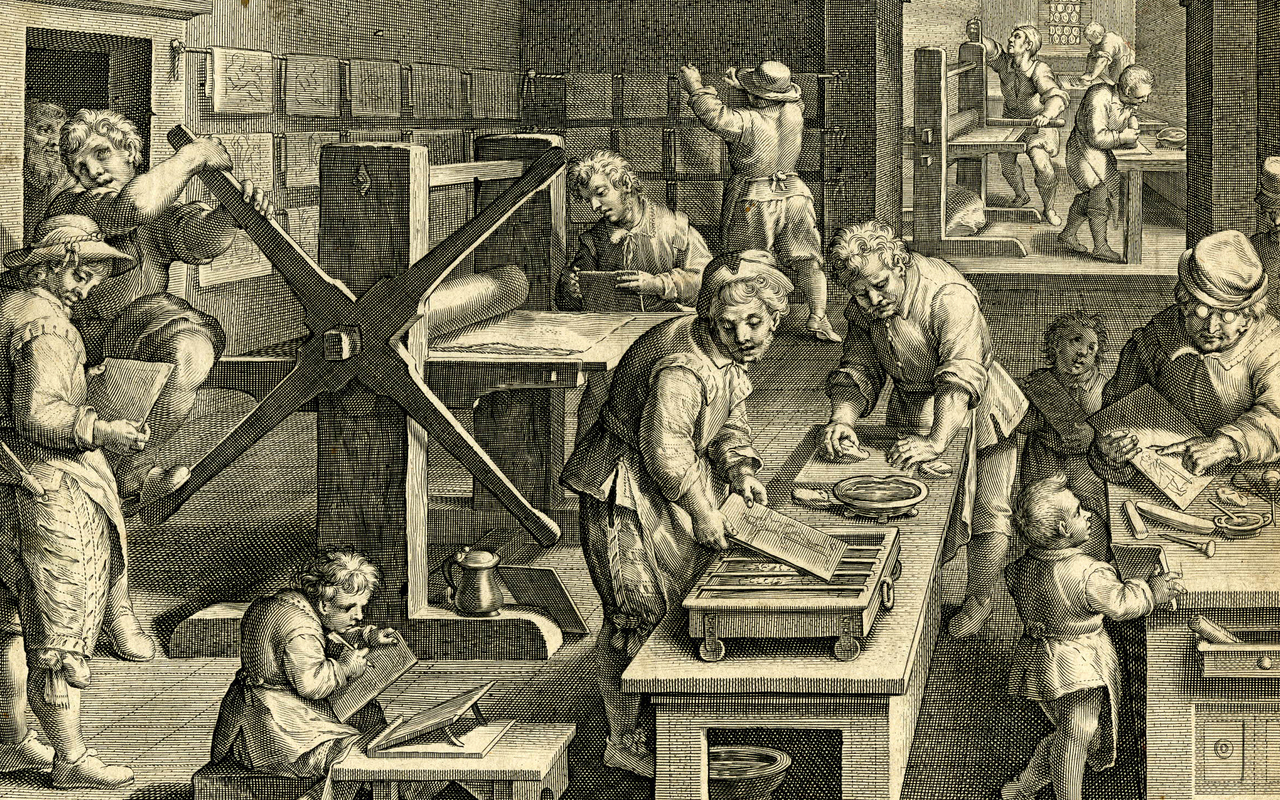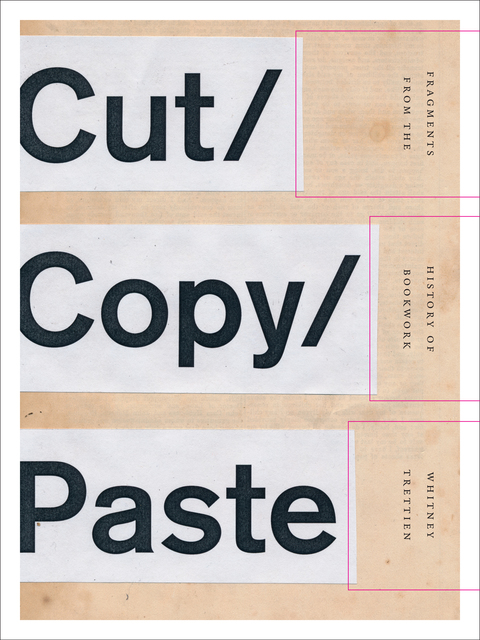Cut/Copy/Paste
Fragments from the History of Bookwork
How do early modern media underlie today’s digital creativity?
In Cut/Copy/Paste, Whitney Trettien journeys to the fringes of the London print trade to uncover makerspaces and collaboratories where paper media were cut up and reassembled into radical, bespoke publications. Bringing these long-forgotten objects back to life through hand-curated digital resources, Trettien shows how early experimental book hacks speak to the contemporary conditions of digital scholarship and publishing.
Whitney Trettien’s Cut/Copy/Paste is a seriously delightful book, and a delightfully serious one. She travels to the fringe of the book trade to show how makers in the seventeenth and eighteenth centuries created assemblages from pre-existing print books, making entirely new works of art that both drew on traditional culture and simultaneously reinvented it. In the process, she herself reinvents that it means to do book history, drawing exciting parallels between the near past and our transitional moment as we move from print to digital culture. Highly recommended for book historians, media theorists, and anyone who loves a good story.
—N. Katherine Hayles, author of Postprint: Books and Becoming Computational
Background engraving after Jan van der Straet, “Sculptura in Aes,” Nova Reperta (New Inventions) (Antwerp: Philips Galle, c. 1580-1605). British Museum Collection Database, Ii,5.174.

Table of Contents
Resources
Resource Collections
Humphrey Moseley
CollectionLatin Exercise Book
CollectionFrancis Quarles
CollectionEmblems
CollectionLittle Gidding
CollectionWenceslaus Hollar
CollectionPhineas Fletcher
CollectionRoger Norton
CollectionTheophila
CollectionEdward Benlowes
Collection
Single Resources
Image Image Calligraphic designs in MS Harley 5949
Image Letter from Elsie Binns to Fanny Reed Hammond
Image Letter from John D. Collett to Fanny Reed Hammond
Image Article by Virginia Huntington in the Fanny Reed Hammond scrapbooks
Image Letter from Joseph Harvey to Virginia Huntington
Image Photographs pasted in the Fanny Reed Hammond scrapbooks
Image A diuine descant
Image Auction catalogue pages in Fanny Reed Hammond's scrapbooks
Image Envelopes pasted in the Fanny Reed Hammond scrapbooks
Recent Activity
Resource Added Calligraphic designs in MS Harley 5949
Resource Added Letter from Elsie Binns to Fanny Reed Hammond
Resource Added Letter from John D. Collett to Fanny Reed Hammond
Resource Added Letter from Joseph Harvey to Virginia Huntington
April 2019 Draft Chapter
How to Read
The above draft chapter is from my in-progress monograph, Cut/Copy/Paste. An overarching goal of this project—limned in greater detail in the abstract above—is to demonstrate how using digital technologies as bibliographic research tools challenges and changes the kinds of stories we might tell about early modern readers, writers, books, and their publishers. Toward that end, I am staging this draft digitally, so that you might explore some of the images, datasets, maps, graphs, and social networks that undergird my claims about Edward Benlowes as a publisher of boutique printed books. Other chapters on Little Gidding and John Bagford will be made available in this space, too, as this project progresses.
Because this is still a draft chapter, some of its resources and features are more gestural than fully formed at this point. Much of the photography comes from my own research notes; in many cases, you will see hands, call slips, and poor lighting in place of professionally-imaged pages floating against a black background. There are also moments where I wish to incorporate additional resources but am still in the process of obtaining permissions. Even so, it is my hope that the 123 total resources included here offer more than a glimpse of possible future directions for not just this monograph as it progresses but digital book history as an emerging field.
While this chapter has been written linearly, it is lengthy, and certain readers may wish only to engage individual sections. The history of libraries and collecting at the end of the sixteenth and into the seventeenth centuries is addressed in “Mapping Early Modern Libraries.” Sammelbands, miscelleneity, and Phineas Fletcher’s The Purple Island are discussed in “Collaboration and the Cambridge Press.” Benlowes’ major publishing project is introduced in the short section “Toward a Poetics of the Codex” and fully examined in “Assembling Theophila.” The last section, “Humphrey Moseley’s Social Network,” compares Theophila to the Royalist publisher Moseley’s output using a dataset that maps the degree of a book’s collaboration. Other readers may wish simply to explore the chapter’s digital resources by jumping directly to the collections below or using the faceted browser here.
Readers are invited to annotate, highlight, and comment upon any portion of this draft chapter or its resources. I especially welcome comments on the inclusion (or exclusion) of certain digital assets that may assist my argument. Thank you.
Metadata
- rightsPortions of chapter 1 are adapted from “Media, Materiality, and Time in the History of Reading: The Case of the Little Gidding Harmonies,” PMLA 133, no. 5 (2018): 1135–51; reprinted by permission of the copyright owner, The Modern Language Association of America (mla.org). Portions of chapter 1 are also adapted from “Women’s Labor and the Little Gidding Harmonies,” in The Routledge Companion to Women, Sex, and Gender in the Early British Colonial World, ed. Kimberly Anne Coles and Eve Keller (2019), 120–35; reprinted with permission of Informa UK Limited through PLSclear. Portions of chapter 3 are adapted from “Creative Destruction and the Digital Humanities,” in The Routledge Research Companion to Digital Medieval Literature, ed. Jennifer E. Boyle and Helen J. Burgess (2018), 47–60; reprinted with permission of Informa UK Limited through PLSclear.
Open access edition funded by the National Endowment for the Humanities. Support for this project provided by the National Endowment for the Humanities, the Mellon Foundation, the Price Lab for Digital Humanities at the University of Pennsylvania, and the Digital Innovation Lab at the University of North Carolina at Chapel Hill.
Copyright 2021 by the Regents of the University of Minnesota
Cut/Copy/Paste: Fragments from the History of Bookwork is licensed under a Creative Commons Attribution-NonCommercial-NoDerivatives 4.0 International License (CC BY-NC-ND 4.0).
- isbn978-1-4529-5857-6
- publisherUniversity of Minnesota Press
- publisher placeMinneapolis, MN
- restrictionsPlease see the Creative Commons website for details about the restrictions associated with the CC BY-NC-ND 4.0 license.
- rights holderRegents of the University of Minnesota
- doi


